Introduction
In the world of construction, where precision and efficiency are paramount, the utilization of advanced machinery has become a norm. High reach excavators, also known as high reach demolition excavators, are an essential part of this machinery fleet. In this article, we will delve into the world of high reach excavators, understanding what they are, their importance, types, applications, and much more.
What is a High Reach Excavator?
A High Reach Excavator, often referred to as a high reach demolition excavator, is a specialized heavy construction machine meticulously designed to tackle tasks that demand access to elevated heights. Unlike conventional excavators, high reach excavators are equipped with a unique feature – an extended boom and arm that empowers them to reach extraordinary heights and depths during their operations. These machines have become indispensable in various construction and demolition projects where precision and height accessibility are of utmost importance. High reach excavators are highly versatile tools in the construction industry, offering an unmatched ability to reach areas that were once considered challenging or even inaccessible.
This extended reach capability sets them apart, making them the go-to choice for professionals in need of a solution that can handle tasks beyond the capacity of standard excavators. Whether it’s demolishing tall buildings, excavating deep foundations, or salvaging materials from demolished structures, high reach excavators are the ultimate answer when the sky is the limit.
The Importance of High Reach Excavators
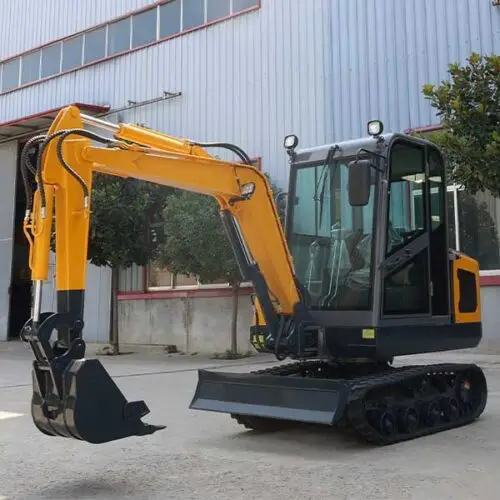
Enhancing Productivity
Enhancing Productivity is a critical aspect of high reach excavators’ role in the construction and demolition industry. These specialized machines play a pivotal role in streamlining and accelerating various construction processes, resulting in improved overall productivity.
By offering extended reach and accessibility to elevated heights, high reach excavators allow construction professionals to carry out tasks that would be extremely time-consuming or even impossible with traditional excavators. This heightened reach capability is particularly beneficial when dealing with tall structures, multi-story buildings, or infrastructures that require careful deconstruction or excavation.
The key ways in which high reach excavators enhance productivity include:
- Efficient Demolition: When demolishing structures, especially in urban settings with limited space, high reach excavators can precisely target and remove specific sections. This precision minimizes collateral damage and speeds up the demolition process.
- Quick Excavation: For projects involving deep foundations or excavations, high reach excavators make quick work of digging deep holes or trenches. Their extended reach allows for more efficient digging, reducing the time required for these tasks.
- Material Handling: High reach excavators can reach materials located at elevated heights or deep within a construction site, making it easier to clear debris or salvage materials. This efficient material handling contributes to project timelines.
- Reduced Manual Labor: High reach excavators minimize the need for manual labor in high-risk areas, enhancing safety while maximizing productivity. Workers can operate the machine from a safe distance, mitigating potential hazards.
- Increased Worksite Efficiency: These machines can cover a larger area of a construction site without the need for repositioning, further optimizing workflow and reducing downtime.
Improved Safety
Improved Safety is a paramount consideration in the realm of high reach excavators, and it is one of the key reasons why these specialized machines have gained widespread acceptance in the construction and demolition industries. They have redefined safety standards by offering distinct advantages over traditional methods and equipment.
Here are the ways in which high reach excavators significantly enhance safety:
- Reduced Human Exposure: High reach excavators allow operators to control the machine from a safe distance. This minimizes the need for workers to be in close proximity to potentially hazardous areas, such as a building under demolition or an excavation site.
- Precision Demolition: The precision of high reach excavators is invaluable when demolishing tall or delicate structures. The operator can precisely target the sections to be removed, reducing the risk of accidents and collateral damage.
- Stability: High reach excavators are designed for stability and balance, even at great heights. This engineering ensures that the machine is less prone to tipping or accidents during operation.
- Advanced Safety Features: Many modern high reach excavators are equipped with advanced safety features, such as sensors and alarms that alert the operator to potential hazards, improving situational awareness.
- Compliance with Regulations: High reach excavators are designed to meet safety regulations and standards. Operators are trained to adhere to safety protocols, further minimizing risks.
- Personal Protective Equipment: Operators of high reach excavators are required to wear appropriate personal protective equipment, including helmets, safety harnesses, and visibility gear, adding an extra layer of safety.
- Reduced Environmental Hazards: The precise control and reduced debris from high reach excavators result in fewer environmental hazards. This is crucial in urban settings where dust, noise, and debris can pose risks to nearby properties and people.
Types of High Reach Excavators
Standard High Reach Excavators
Standard High Reach Excavators are a common and versatile category of high reach excavators used in the construction and demolition industry. These machines are equipped with extended booms and arms, providing them with the capability to reach considerable heights and perform various tasks that require precision, stability, and efficiency.
Key features and characteristics of standard high reach excavators include:
- Extended Reach: Standard high reach excavators typically offer a reach of up to 100 feet or more, depending on the model. This extended reach allows them to access and work at elevated heights, making them suitable for a wide range of applications.
- Versatility: These excavators are highly adaptable and can be used in a variety of scenarios, from demolishing tall buildings to clearing debris from construction sites. Their versatility makes them a valuable addition to any construction fleet.
- Precision Demolition: One of the standout features of standard high reach excavators is their ability to perform precise demolition work. Operators can precisely target specific areas for removal, reducing the risk of collateral damage to adjacent structures or elements.
- Enhanced Stability: Safety is a priority in construction, and standard high reach excavators are designed with stability in mind. Their counterweights, sturdy construction, and balanced design ensure that they can work at heights without compromising stability.
- Hydraulic Systems: These excavators are equipped with advanced hydraulic systems that allow for smooth and controlled movements, making them ideal for delicate operations, such as dismantling tall structures.
- Operator Comfort: The cabs of standard high reach excavators are designed for operator comfort and efficiency. They are equipped with ergonomic controls, visibility enhancements, and climate control features to ensure a conducive working environment.
- Attachments: Various attachments can be used with standard high reach excavators, further expanding their utility. Attachments include grapples, hydraulic hammers, and shears, allowing these machines to perform a wide range of tasks.
Long Reach Excavators
Long Reach Excavators, a subcategory of high reach excavators, are specialized heavy construction machines designed to tackle tasks requiring access to extreme heights or depths. These machines are equipped with extended booms and arms, surpassing even the already impressive reach of standard high reach excavators. Long reach excavators are specifically engineered for projects that demand superior vertical and horizontal reach, making them ideal for tasks involving exceptionally high or deep excavation and demolition work.
Key features and characteristics of long reach excavators include:
- Unrivaled Reach: Long reach excavators are engineered to reach extraordinary heights and depths. With a reach capability that can extend well over 100 feet, these machines are the go-to choice for handling projects that demand access to extreme vertical or horizontal distances.
- Precision Demolition: Just like their standard counterparts, long reach excavators excel in precise demolition work. Their extended reach allows operators to delicately deconstruct tall structures without causing undue damage to neighboring elements.
- Deep Excavation: Long reach excavators are particularly useful in excavation projects that require digging deep foundations, trenches, or holes. Their impressive horizontal reach enables them to reach the desired depths efficiently.
- Stability and Balance: Safety remains a top priority in the operation of long reach excavators. These machines are meticulously engineered to maintain stability even at their maximum reach, reducing the risk of accidents or tipping during operation.
- Advanced Hydraulic Systems: Long reach excavators are equipped with advanced hydraulic systems that facilitate precise and controlled movements. This is especially crucial in tasks where accuracy is of the essence.
- Operator Comfort: The operator’s comfort and safety are paramount in the design of long reach excavators. The cabs are equipped with ergonomic controls, enhanced visibility, and climate control features, ensuring a conducive working environment.
- Wide Range of Attachments: Like their standard counterparts, long reach excavators can be fitted with various attachments, expanding their versatility. Attachments such as grapples, hydraulic hammers, and shears further broaden their range of applications.
Advantages of High Reach Excavators
The Advantages of High Reach Excavators in the construction and demolition industry are both profound and multifaceted. These specialized machines offer a range of benefits that set them apart from conventional excavators, making them indispensable for various projects. Here, we delve into the key advantages that high reach excavators bring to the table:
- Precision in Demolition: High reach excavators excel in precise demolition work. Their extended reach and sophisticated hydraulic systems allow operators to target specific areas for removal with accuracy. This precision is particularly valuable when deconstructing tall structures or removing sections of buildings while minimizing collateral damage.
- Enhanced Reach: The defining feature of high reach excavators is their exceptional height and depth accessibility. These machines can reach heights of up to 100 feet or more, surpassing the capabilities of traditional excavators. This extended reach is invaluable when dealing with multi-story buildings and structures that require access to elevated areas.
- Reduced Risk of Collateral Damage: High reach excavators are designed to minimize the risk of causing damage to adjacent structures or elements during demolition. Their precision and control mitigate the chances of unintended destruction, ensuring the safety of nearby properties and people.
- Efficiency and Productivity: These machines significantly boost productivity on construction and demolition sites. They streamline tasks by enabling operators to access challenging or hard-to-reach areas quickly. This enhanced efficiency translates to reduced project timelines and cost savings.
- Safety Measures: High reach excavators improve safety by allowing operators to control the machine from a safe distance. This minimizes the exposure of workers to potentially hazardous areas. Advanced safety features, such as sensors and alarms, further enhance the safety of operation.
- Minimized Environmental Impact: High reach excavators produce less noise and dust compared to traditional demolition methods, resulting in a reduced environmental impact. Manufacturers are increasingly developing models with lower emissions, contributing to a more eco-friendly construction industry.
- Versatility: These machines are versatile and adaptable to a wide range of applications, from demolishing tall buildings to excavating deep foundations. Their ability to handle various tasks makes them a valuable asset on construction sites.
Applications of High Reach Excavators
The Applications of High Reach Excavators encompass a wide array of tasks within the construction and demolition industries, making these specialized machines incredibly versatile and invaluable for various projects. Their unique capabilities, including extended reach and precision, enable them to perform a diverse range of functions. Here, we explore some of the primary applications of high reach excavators:
- Demolishing Tall Structures: High reach excavators are especially effective in demolishing tall buildings and structures. Their extended booms and arms, combined with precision control, allow for the controlled deconstruction of multi-story buildings while minimizing risks and damage to adjacent properties.
- Excavating Deep Foundations: These machines are well-suited for digging deep foundations, such as those required for bridges, piers, or underground utilities. Their ability to reach significant depths streamlines excavation work and ensures precise digging.
- Clearing Debris from Construction Sites: High reach excavators play a pivotal role in clearing debris and materials from construction sites. Their reach and power make them efficient tools for the removal of rubble, waste materials, and other construction byproducts.
- Salvaging Materials from Demolished Buildings: After a demolition, high reach excavators are used to salvage valuable materials, such as steel beams or concrete blocks. This eco-friendly practice reduces waste and environmental impact.
- Working in Confined Spaces: High reach excavators are designed to operate in tight or constrained spaces, such as urban construction sites. Their ability to reach great heights without requiring an extensive working area is particularly advantageous in these settings.
- Bridge Construction and Repair: High reach excavators are essential in bridge construction and repair. They can reach and work under bridges, making them ideal for tasks like concrete removal, maintenance, or painting.
- Landscaping and Tree Removal: In some cases, high reach excavators are used for landscaping tasks, including tree removal. Their precision is valuable when removing trees in urban or sensitive environments.
- Dredging and Waterway Maintenance: High reach excavators can also be employed for dredging and waterway maintenance. Their extended reach is useful for excavating sediment from rivers, lakes, or harbors.
- Utility Line Installation and Maintenance: When working on utility line installation or maintenance projects, high reach excavators can access underground pipes and cables with ease, facilitating repairs or installations.
- Emergency Response: High reach excavators are occasionally deployed in emergency response situations, such as rescue operations after natural disasters, where their reach and power can be invaluable.
Safety Measures
Safety Measures when operating high reach excavators are of paramount importance to ensure the well-being of the operators and those working around the machine. High reach excavators, due to their extended reach and the nature of their tasks, come with inherent risks that must be managed effectively. Here are essential safety measures that need to be observed:
- Operator Training: Proper and comprehensive training for the operators is the foundation of safety. Operators should be well-versed in the controls, emergency procedures, and safety protocols specific to high reach excavators.
- Regular Maintenance: Maintenance schedules should be strictly adhered to. Routine inspections and servicing are vital to keep the machine in optimal working condition, reducing the risk of unexpected breakdowns that can lead to accidents.
- Risk Assessment: Conduct thorough risk assessments before starting any task. Identify potential hazards and plan how to mitigate them. Ensure that operators are aware of the risks associated with the specific job.
- Safety Gear: Operators should wear appropriate personal protective equipment (PPE), including helmets, safety harnesses, visibility gear, and, in some cases, hearing protection. These measures safeguard against injuries in the event of an accident.
- Ground Stability: Ensure that the ground where the high reach excavator is positioned is stable and can support the machine’s weight. Soft or uneven terrain can lead to tipping or instability.
- Maintaining Distance: Clear the work area of unnecessary personnel, and maintain a safe distance from the machine during operation. High reach excavators are designed to be operated remotely to minimize the risk of accidents involving workers in close proximity.
- Site Barriers: Erect barriers or safety fencing around the work area to prevent unauthorized access and to keep bystanders away from potentially hazardous zones.
- Safety Alarms and Sensors: Ensure that the machine is equipped with safety alarms and sensors that warn the operator of potential hazards, such as nearby structures or people. Operators should be trained to respond promptly to these warnings.
- Operational Control: Operators must exercise precise and controlled movements when operating the machine. Abrupt or careless actions can lead to accidents or damage.
- Emergency Procedures: Establish clear emergency procedures, including communication protocols, in case of an accident or equipment failure. Operators should be familiar with these procedures and be prepared to act swiftly.
- Environmental Conditions: Be mindful of weather conditions, as wind and rain can affect the stability and safety of the machine. Work should be halted in adverse weather conditions.
- Visibility: Ensure that operators have a clear line of sight from the machine’s cab. Proper visibility is crucial for precision work and for avoiding hazards.
- Safe Loading: When using attachments or lifting heavy loads, operators should adhere to safe loading limits and follow manufacturer guidelines to prevent overloading, which can lead to tipping.
- Regular Inspections: Conduct daily pre-operation inspections of the equipment to detect any issues, malfunctions, or wear and tear that may affect safety.
Maintenance and Cost Considerations
Maintenance and Cost Considerations are crucial aspects of managing high reach excavators in the construction and demolition industry. These machines, like all heavy equipment, require meticulous upkeep to ensure longevity, safe operation, and cost-effectiveness. Here, we explore the significance of maintenance and the associated cost considerations:
- Regular Maintenance: High reach excavators should undergo routine maintenance checks as prescribed by the manufacturer. This includes inspections of hydraulic systems, electrical components, engine performance, and structural integrity. Regular maintenance minimizes the risk of sudden breakdowns and maximizes the machine’s operational life.
- Scheduled Servicing: Adhering to a scheduled servicing plan is vital. Professional technicians should conduct comprehensive servicing to address wear and tear, replace worn-out parts, and carry out necessary adjustments. This prevents costly repairs and downtime.
- Monitoring Fluid Levels: Monitoring fluid levels, including hydraulic fluids, engine oil, and coolants, is a routine but critical aspect of maintenance. Ensuring proper levels and fluid quality is vital for the machine’s efficiency and reliability.
- Replacement Parts: When replacing parts, using high-quality, manufacturer-recommended components is essential. While these parts might have a higher upfront cost, they often extend the lifespan of the machine, reduce downtime, and prevent unexpected repair expenses.
- Operator Training: Properly trained operators contribute to the machine’s longevity. Operators should be knowledgeable about the machine’s functions and be aware of how their actions can affect wear and tear. Improper operation can lead to premature wear and increased maintenance costs.
- Cost of Downtime: Downtime due to maintenance or repairs can result in significant costs in terms of lost productivity. Minimizing downtime through regular maintenance and efficient repairs is vital for cost considerations.
- Budgeting for Maintenance: Construction companies should allocate budgets for maintenance expenses. This includes routine checks, servicing, and occasional unexpected repairs. This proactive approach helps manage maintenance costs effectively.
- Inspections and Diagnostics: Regular inspections and diagnostics can identify potential issues early on, preventing them from escalating into costly problems. Technicians can identify and address minor faults before they become major repairs.
- Environmental Considerations: Some maintenance and repair activities may involve disposing of hazardous materials. Companies should consider environmental regulations and costs related to proper disposal.
- Predictive Maintenance: Implementing predictive maintenance practices, such as condition monitoring and data analysis, can help identify issues before they cause major damage, reducing overall maintenance costs.
- Manufacturer Guidelines: Following the manufacturer’s guidelines for maintenance schedules and procedures is crucial. Deviating from these recommendations can lead to unexpected breakdowns and increased costs.
Choosing the Right High Reach Excavator
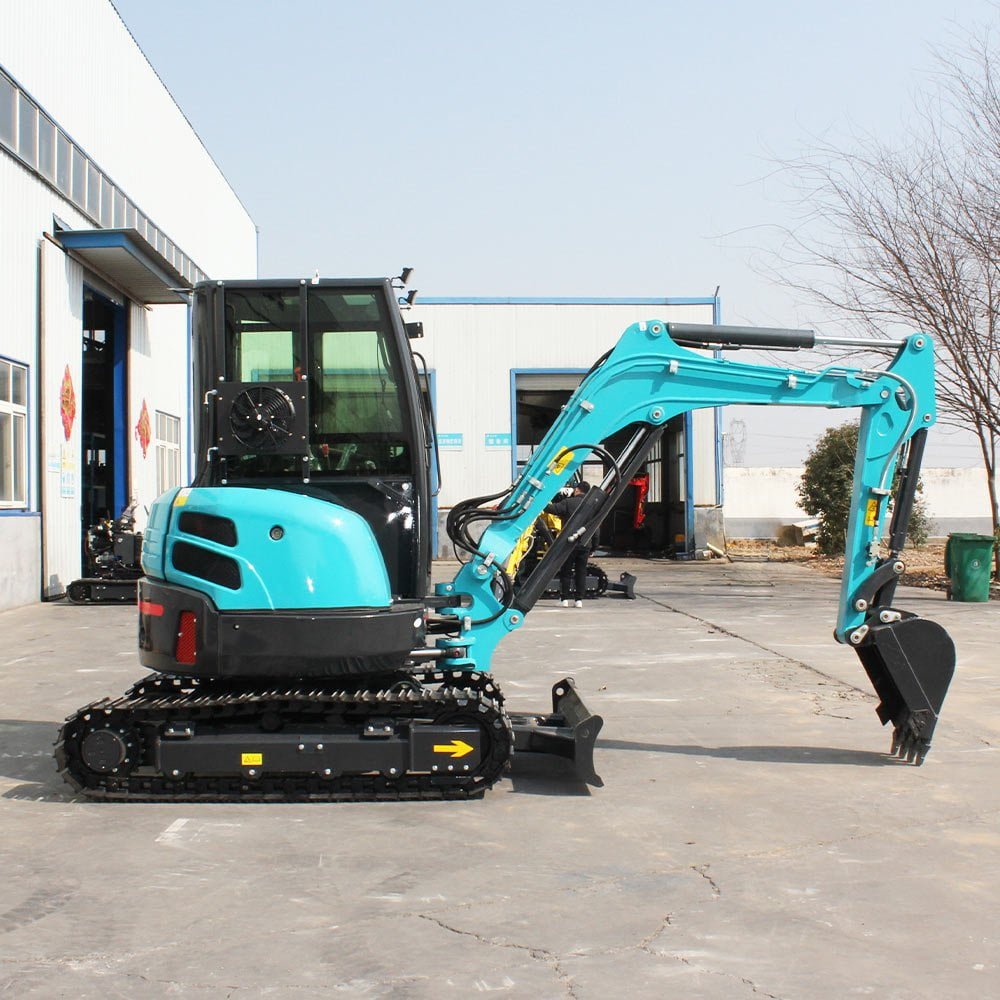
Choosing the Right High Reach Excavator is a critical decision for construction and demolition professionals, as it directly impacts the success and efficiency of a project. Selecting the appropriate machine involves careful consideration of various factors, all of which influence the outcome of the task at hand. Here’s a detailed guide on making the right choice:
- Project Requirements: Begin by understanding the specific requirements of your project. Consider the height and depth you need to reach, the type of materials to be handled, and the level of precision required. Each project is unique, and your choice should align with its demands.
- Machine Size and Reach: Determine the required reach for your project. High reach excavators come in various sizes with different reach capabilities. Choose a machine with the appropriate reach to access the desired heights or depths.
- Attachment Compatibility: Consider the attachments you may need for your project. Different high reach excavators are compatible with various attachments, such as grapples, hydraulic hammers, and shears. Ensure the machine can accommodate the attachments essential to your task.
- Operator Expertise: Evaluate the expertise of your operators. Complex projects may require skilled operators, so ensure your team is proficient in operating the chosen high reach excavator.
- Budget Constraints: Cost considerations are significant. High reach excavators come with varying price tags, so align your choice with your budget. Be cautious about making the lowest-cost choice if it compromises efficiency and safety.
- Environmental Regulations: Familiarize yourself with local environmental regulations. Some regions may have emissions standards or noise restrictions that high reach excavators must meet. Choose a machine that complies with these regulations.
- Terrain and Accessibility: Assess the terrain and accessibility of your project site. Some high reach excavators are more suitable for rough or uneven terrain, while others excel in confined spaces. Select a machine that aligns with your site’s conditions.
- Manufacturer Reputation: Research and choose a reputable manufacturer known for producing high-quality equipment. Established manufacturers often offer better support, parts availability, and reliability.
- Safety Features: Prioritize machines with advanced safety features, such as sensors, alarms, and safety cabs. These features enhance the safety of operation, reducing the risk of accidents.
- Resale Value: Consider the resale value of the machine. High-quality, well-maintained machines tend to hold their value, which can be advantageous when you’re ready to upgrade or change equipment.
- Warranty and Support: Review the warranty and after-sales support provided by the manufacturer. A strong warranty and accessible support can provide peace of mind in case of unexpected issues.
- Efficiency and Productivity: Choose a high reach excavator that aligns with your project’s timeline and productivity goals. More efficient machines may justify a higher initial cost through quicker task completion.
- Environmental Impact: Be mindful of the machine’s environmental impact. Select models with lower emissions and reduced fuel consumption to align with environmental sustainability goals.
Notable Manufacturers
High reach excavators are substantial investments, and choosing the right manufacturer is crucial to ensure the quality, reliability, and longevity of the machine. Several Notable Manufacturers stand out in the construction equipment industry, known for producing high-quality high reach excavators. Here’s an overview of some of the top manufacturers to consider:
- Caterpillar (Cat): Caterpillar is a globally recognized manufacturer of construction and mining equipment. Their high reach excavators are known for their durability, advanced technology, and operator comfort. Cat’s extensive dealer network offers excellent support and parts availability.
- Volvo: Volvo Construction Equipment is another prominent manufacturer with a strong presence in the construction industry. Their high reach excavators are acclaimed for their performance, fuel efficiency, and innovative features. Volvo emphasizes environmental sustainability in their machine design.
- Hitachi: Hitachi is renowned for its high reach excavators’ reliability and precision. Their machines are known for their advanced hydraulic systems and durable build. Hitachi is a trusted name in the construction equipment market.
- Komatsu: Komatsu’s high reach excavators are appreciated for their operator-friendly cabs, safety features, and efficient performance. The company is known for its commitment to environmental responsibility and innovative technology.
- Liebherr: Liebherr manufactures high reach excavators that are recognized for their stability, reach, and versatility. Liebherr machines are often used in challenging construction and demolition projects, thanks to their rugged design.
- JCB: JCB is known for its diverse range of construction equipment, including high reach excavators. Their machines are often favored for their compact design and maneuverability, making them suitable for urban construction projects.
- Sennebogen: Sennebogen specializes in material handling and high reach equipment. Their machines are known for their robust build and are often used in recycling, scrap handling, and port applications.
- Kobelco: Kobelco’s high reach excavators are admired for their innovative technology and reliability. They are known for their efficient engines and excellent performance in various construction tasks.
- Doosan: Doosan offers a range of high reach excavators that are appreciated for their power and precision. They are often chosen for demanding demolition and excavation work.
- Hyundai Construction Equipment: Hyundai’s high reach excavators are known for their competitive pricing without compromising on quality. They offer a range of models suitable for different project requirements.
Environmental Impact
Evaluating the Environmental Impact of high reach excavators is an integral part of responsible equipment management in the construction and demolition industries. These heavy machines can have a substantial environmental footprint, but several measures can be taken to mitigate their impact and contribute to a more sustainable approach to construction and demolition work:
- Emissions Reduction: Many manufacturers are developing high reach excavators with advanced emission control technology. These machines produce fewer harmful emissions, helping to reduce their impact on air quality.
- Fuel Efficiency: High reach excavators with improved fuel efficiency consume less fuel per unit of work, resulting in lower fuel costs and reduced greenhouse gas emissions. Operators should be trained to use machines in a way that optimizes fuel consumption.
- Hybrid and Electric Options: Some manufacturers offer hybrid or electric high reach excavators, which produce zero emissions during operation. These eco-friendly alternatives can significantly reduce the carbon footprint of construction and demolition projects.
- Noise Reduction: High reach excavators can be equipped with noise-reduction features, such as quieter engines and enhanced insulation. This minimizes noise pollution, making them more suitable for urban environments.
- Attachment Efficiency: Using the right attachments for specific tasks can improve efficiency and reduce environmental impact. For example, using shears instead of hammers for concrete demolition can decrease noise and dust emissions.
- Proper Waste Management: Responsible disposal of waste materials, such as oil, filters, and other machine-related materials, is crucial. These materials should be managed and disposed of in accordance with environmental regulations.
- Site Management: Adopting practices that prevent soil erosion and protect natural habitats on the construction site is essential. Implementing sediment control measures and responsible land management can help reduce the ecological impact.
- Recycling and Reusing Materials: Salvaging and recycling materials from demolished structures can significantly reduce the environmental impact of construction and demolition. It minimizes waste and the need for new materials.
- Regular Maintenance: Proper maintenance not only extends the life of high reach excavators but also ensures that they operate at peak efficiency, reducing fuel consumption and emissions.
- Environmental Compliance: Staying informed about and complying with local and national environmental regulations is crucial. Construction and demolition projects should adhere to laws governing emissions, noise, and waste disposal.
- Environmental Certification: Some high reach excavators may have environmental certifications, indicating that they meet specific environmental standards. Choosing certified machines can be a responsible choice.
- Sustainable Practices: Adopting overall sustainable construction and demolition practices, such as energy-efficient building designs and eco-friendly construction materials, can further reduce the environmental impact of these projects.
Future Trends
Future Trends in the realm of high reach excavators are expected to be shaped by the growing demand for more sustainable and efficient construction and demolition practices. As technology continues to advance and environmental considerations become increasingly critical, several trends are anticipated to shape the future of these specialized machines:
- Electric and Hybrid Models: The construction industry is moving toward electric and hybrid high reach excavators. These machines produce zero emissions, reducing their environmental impact. As battery technology advances, the range and power of electric machines are expected to increase.
- Advanced Telematics: Telematics systems are becoming more sophisticated. High reach excavators will be equipped with advanced monitoring and remote control features, allowing operators to track performance, diagnose issues, and even operate the machine from a distance, enhancing safety and efficiency.
- Automation and AI: High reach excavators are expected to incorporate artificial intelligence for autonomous operations. This can improve precision and reduce the need for highly skilled operators, making the machines more accessible and cost-effective.
- Sustainability Features: Manufacturers are likely to focus on sustainability features, such as increased use of recyclable materials in machine construction, as well as energy-efficient components and systems to minimize environmental impact.
- Improved Fuel Efficiency: High reach excavators will continue to see enhancements in fuel efficiency, reducing both operating costs and emissions. Innovative engine designs and hybrid technology will play a significant role in achieving this.
- Reduced Noise Levels: Quieter high reach excavators are expected to become more common, especially in urban construction. Noise reduction measures, such as improved insulation and quieter engines, will be integrated into these machines.
- Data Analytics and Predictive Maintenance: Machine data analytics will become standard, allowing operators to predict maintenance needs and prevent costly breakdowns. This technology will extend the lifespan of high reach excavators and reduce downtime.
- Enhanced Safety Features: Manufacturers will continue to improve safety features, including more advanced sensors, alarms, and collision avoidance systems, reducing the risk of accidents and enhancing overall site safety.
- Customization Options: High reach excavators will become more customizable, allowing construction professionals to tailor machines to specific project needs, whether for demolition, excavation, or material handling.
- Emission Standards Compliance: High reach excavators will be designed to meet increasingly stringent emission standards. Compliance with these regulations will be a priority for manufacturers, reducing the environmental impact of these machines.
- Global Market Expansion: The demand for high reach excavators is expected to grow in emerging markets as construction and demolition activities increase. Manufacturers will seek to expand their reach to meet this demand.
- Circular Economy Practices: Manufacturers may adopt circular economy principles, designing machines for easy disassembly, reuse, and recycling, thereby reducing waste and environmental impact.
Conclusion
High reach excavators are revolutionizing the construction industry. Their ability to reach great heights, enhance safety, and increase productivity makes them invaluable assets on job sites. As technology progresses, high reach excavators are likely to become even more efficient and environmentally friendly.
FAQ
What is the maximum height a high reach excavator can reach?
High reach excavators can reach heights of up to 100 feet or more, depending on the model.
Are high reach excavators safe to operate?
Yes, when operated by trained professionals and with proper safety measures in place, high reach excavators are safe.
How do I choose the right high reach excavator for my project?
Consider factors like project height, reach, and budget when selecting the appropriate machine.
Do high reach excavators have an impact on the environment?
Like all heavy machinery, they do have an environmental impact, but manufacturers are working on more eco-friendly options.
What are the maintenance requirements for high reach excavators?
Regular servicing is essential to keep these machines in good working condition and to prevent costly breakdowns.

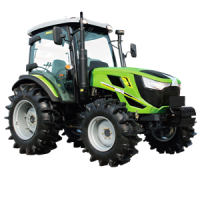
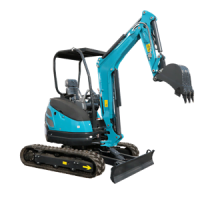
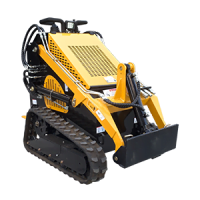
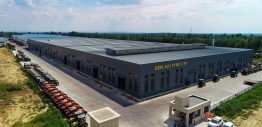
-1.png)